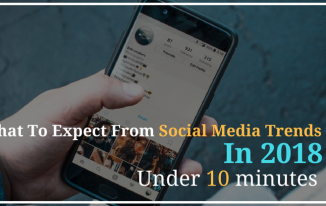One of the most common mistakes marketers make is that they do not target their audience, and that lack of targeting makes your message not relevant to your audience, since you do not know their tastes and preferences.That’s why knowing how to identify your target audience and creating your persona are key factors in your company’s planning and success.
Persona X Audience
Many people think persona and target audience are synonymous, but this is not true. Although they are directly connected, they have different concepts.Target audience is that all-encompassing portion of the society you choose as your primary customers. The target audience does not refer to a specific person, but to a set of people who may want to buy your products or services.The persona is the materialization of your target audience, that is, it is the representation of your ideal client, in a more personalized way.
Let’s take an example so you can visualize better:
- Target audience: Men and women, aged 24 to 40, graduated in advertising and marketing, with average monthly income of R $ 3,500 to R $ 10,000. They are interested in the news of the digital market and intend to increase their professional qualification to be more valued in the company in which they work.
- Persona: Luiz is 33 years old, is a marketing assistant for a large company. He thinks of developing himself professionally through professional courses in Digital Marketing, because besides being always in the digital media, he believes that it will be a great differential. You are looking for a professional training course that will enable you to the digital market.
Market-oriented actions increase the possibilities for good service, as they help to get to know the public and avoid efforts on other ineffective fronts. Before launching your campaign on the seven winds, it is important to look at who really cares to notice your presence. Check out some tips to help you identify your target on social media.
1. Conduct Your Own Searches
Want more details about your audience? Assemble market research according to your need for knowledge. Tools like Survey Monkey, Google Drive, and Wufoo help you create online forms with specific questions. By means of illustrative reports it is possible to calculate the results in a simple way.
To encourage your audience to respond to polls offer exclusive discounts or advantages and highlight the importance of participation for enhancements to your products or services. Take the time to ask which social network is most used by your customers. In addition to Facebook and Twitter, you can do more focused actions, taking advantage of the tools available in segmented networks, such as Linkedin.
2. Analyze theData
Finding the target audience is not a simple and quick task. However, social networks like Facebook have very efficient and easy-to-understand data analysis tools. Pages created on Facebook can be tracked through Page Insights, an application that points out relevant information about tastings, comments, and shares. You can quickly access gender numbers (percentage of tanned by men and women), age (how old are people who like your page), location (where these people live), and visits.
3. Listen toYour Audience
Feedback from your audience will serve as a great foundation for future strategies. Watch out for the profiles you enjoy, and especially for those who criticize. Keep a fixed channel of direct relationship with the client, so it will be easier for you to question him about his tastes.
4. Organic and Paid Searches
Fully related to the first step, is this our second stage: go to Google and research on things related to your product, service and business. So, you can go opening your search engine and thinking what types of search your potential customers make to find what you have to offer. When we stop to analyze and pay attention to these issues, we can see who the target audience of these companies are. So, in addition to knowing who to attack with our strategies, you can find ways to be more efficient than others!
5. Research withThe Public
With each step we are going walking and getting closer to the public of your company. All of the impressions, data, and insights gained so far help shape the profile of who you need to reach in this digital environment to achieve good results. After formulating a hypothesis and getting a sense of who your audience is on the internet, it’s time to start confirming these assumptions – even if they are well grounded. For this, nothing better than listening to the people you believe to be your target. If not them, who else can tell you whether or not you are on the right path and that the direction of actions will be most appropriate? So, spend a little time on this. Spend no, invest time in it!
6. Think Like Customer
If you use your own products is easier. If you do not use it, talk to that friend, aunt, cousin or coworker who has already bought your products. Sometimes your idea for that product can be wonderful, but you should think about who will need it to the point of buying it. All information collected through these surveys will be important. This will make you aware of what problems your customers have and how your products will help solve them.
7. Analytics
After all these steps have you identified the right audience? Is it the kind of user you are attracting and interacting with your company? Is that what will really bring results? The last step of all this journey is to analyze concrete data, rather than your feeling and perception, to see what your business landscape is like for users. This is possible through web analytics – and tools like Google Analytics itself, the most popular of them. This analysis is fundamental to taking real evidence of what is happening. Knowing which user profile most accesses your site and converts, whether by contacting, downloading, asking for a quote, or buying – you can direct efforts to that audience to further enhance results!
Conclusion
After following all 6 steps, how safe are you? Can you pinch your audience on the internet? Did you find the profile to be explored by your digital marketing actions to get impact results for your business? Identifying which is your ideal user demands a certain job in the beginning, but it is critical for your company to succeed later. It’s a worthwhile time investment to make the strategy as assertive as possible!
Author Bio
Sarah Feldman is a Marketing Manager and is currently working with Digital Express, a digital agency specialized in social media marketing and social media management in dubai. She loves to learn and share the latest social media updates, trends, tips and tricks.




